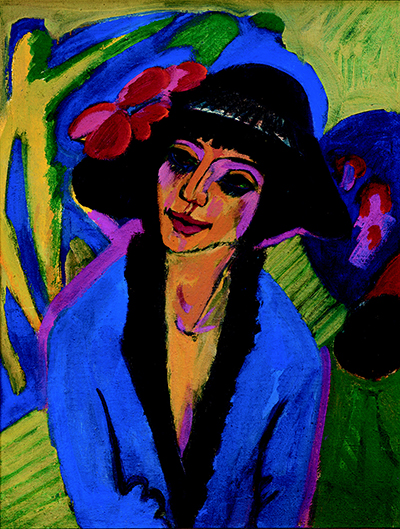The artist put together this bright portrait in 1914, at a time of great turmoil across the European continent.
Green, blue and purple tones create a stunning scene, with Kirchner choosing a typically limited palette. The result is expressive and bold, in keeping with his approach over several decades. In the background we can make out a number of figures, perhaps dancing. The model's hat and smart attire suggests the environment as being a social occasion. Gerda has some pretty flowers on her hat and looks to the left of the canvas, with a contented expression on her face. She dominates the scene, with the artist gifting her figure almost all of the painting's focus. It is a half length depiction, aggressively cropped in a way unseen in European art until around a century earlier.
The painting has been a part of the collection of the Von der Heydt Museum in Wuppertal since the 1950s and remains one of their key highlights. It is a relatively small portrait, measuring just 70 × 57 cm, with a smaller canvas chosen because of the relative lack of detail within this piece. It more concentrates on colour and expression, just as much of Kirchner's other work would do. The painting that we find here specifically displays Gerda Schilling, who was the sister of nightclub dancer of Erna, the artist's partner. The lighting and colour provides an atmosphere of exciting nightlife, perhaps even in one of her workplaces.
Art critics have discussed the model's attire and classified as in keeping with the urban fashion of that region during that period. Her makeup is classy, grabbing your attention but without being overly done. She looks elegant and alluring, and the artist typically portrayed his models in confident and respectful ways. His female portraits would become a major part of his career oeuvre, though there is plenty more to see from his list of paintings for those who are particularly interested in his life's work. You will find, though, that as form and composition changes, the colour schemes remain relatively consistent throughout.




